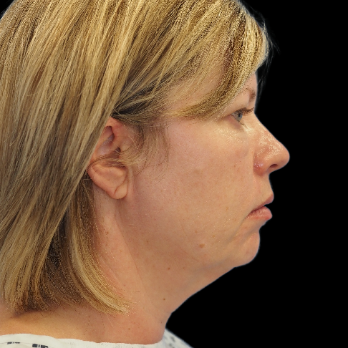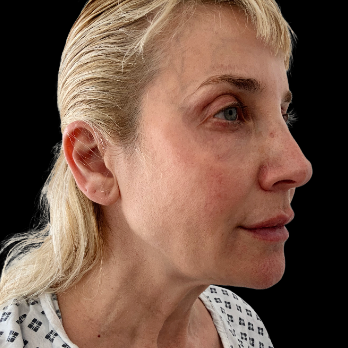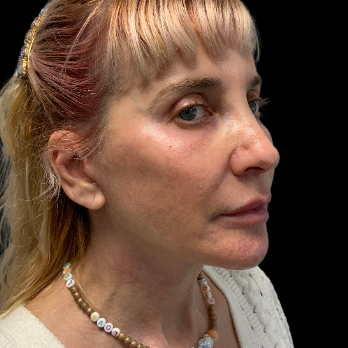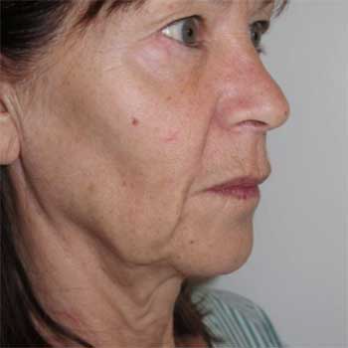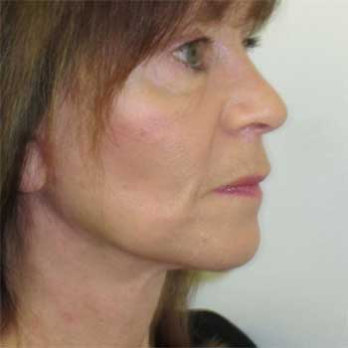
Facelift Surgery (Rhytidectomy)
Facelift surgery (Rhytidectomy) is a procedure that lifts and tightens the facial tissues in order to rejuvenate the face. Patients request this type of surgery to tighten loose skin in the cheeks, jawline and the neck which happens as a result of ageing. Over time visible creases and lines begin to appear with sagging skin around the jowls and neck but also there is a loss of volume
Facelift Surgery should never be considered as a 'one size fits all' procedure, because facial ageing affects everyone differently. It needs to be tailored as each person may require a different facelift technique for the best results.
You can read more about the different types of facelift surgery procedures below and on the related pages covering mini-facelifts, deep plane facelifts and necklifts.One of the latest advances is to combine fat transfer with deep plane facelift surgery since providing volume to the face is a very powerful rejuvenating procedure. You can read how such techniques provide some of the best results on the stem cell facelift page under 'related treatments'.
Based in London, Mr Chana is one of the UK's leading specialists in facelift surgery. The emphasis always is on achieving natural results and avoiding the tell tale signs of an 'operated-on' look. This requires an artistic appreciation of individual variation in anatomy combined with expertise to perform surgery in a manner which achieves the best results. As such Mr Chana is renowned for his results even in the most challenging cases and has been featured in the National Press on numerous occasions.
Minimally invasive facial procedures versis facelift surgery
In more recent times, there has been an explosion in minimally invasive facial procedures and non-surgical facelift ideas promoted by various companies and nonsurgical qualified practitioners. Although there is an obvious attraction to avoiding surgery, it still holds true that such techniques produce short-term results. Patients need to realise that no minimally invasive facial procedure will match the results of a surgical facelift.
Often the main hesitation in proceeding with surgery is the anaesthetic itself and the post-operative recovery time. However, with modern techniques which use an intravenous form of sedation (TIVA) combined with carefully planned and performed surgery, patients are discovering they are surprisingly pain free and have quick recovery times.
Above all it is important to remember that to make a fully informed choice on the benefits of a non-surgical approach versus a surgical one, you must seek the advice of a fully qualified plastic or cosmetic surgeon. Asking a practitioner unqualified to perform facelift surgery will not provide you with the information you require.
What are the overall benefits of a facelift and how long with the results last?
In experienced hands, facelift surgery will create a youthful looking face that avoids visible scars and an ‘operated on’ appearance. Modern procedures encompass a number of state-of-the-art techniques that can be individualised to a patient to give the best and most natural facial appearance. Importantly the results tend to last between eight to ten years which if you picture your life a decade on, will mean you should look much younger for your age compared to a situation if no surgery had been carried out.
Individualising facelift surgery to the patient
A number of important factors are taken into consideration in selecting the correct facelift technique. The most important factor is understanding the patient’s desires and dislikes. A careful analysis is required to assess the patient’s expectation in order to select the correct technique.
At the same time, ageing features, as well as underlying anatomical features, vary from person to person. For example, a younger patient may only have early signs of loose skin on the cheek and jowls for which a mini-facelift is appropriate, whereas an older patient may have considerable skin laxity on the cheeks, jawline and neck which would require both a face and neck lift procedure, which will give the best results.
The techniques of facelift surgery
Although there are a number of different facelift techniques, Mr Chana is prefers the extended deep plane facelift since this provides the best results with excellent longevity. Mr Chana will often combine this with a neck lift and a volume enhancing procedure such as fat transfer. These procedures performed together are a powerful combination and compliment each other to achieve the very best results.
Standard facelift In this procedure, the scar is carefully hidden in the creases in front of the ear and runs in the groove behind the ear and back into the scalp hair. One of the most frequently performed procedures is the SMAS facelift. Just beneath the skin, there is a muscle layer called the Superficial Musculo Aponeurotic System which provides some support to the deeper tissues of the face. This can be tightened in various ways to elevate the tissues and correct the jowls, provide fullness high in the cheekbone area and to correct loose muscle in the neck. Correct elevation and tightening of this layer is critical to avoid tension on the skin and to avoid a ‘wind-swept appearance’. The way in which this layer is tightened and repositioned gives rise to some of the different types of techniques. The SMAS layer can be tightened by removing a strip of this tissue and stitching the edges together which is called a SMASectomy facelift.
The alternative is to avoid removing a strip of SMAS, but instead use tightening stitches to fold this layer inwards thereby preserving volume in the face, a technique called the SMAS Plication facelift. If however the SMAS layer is widely elevated, a long flap of this tissue is available and the tension can then be adjusted in various directions according to where the ageing features are most prominent, a technique called the SMAS facelift.
The deep plane facelift This procedure is a form of SMAS facelift but a more extensive dissection is performed deep to the SMAS layer with a release of the ligaments attaching the to facial skeleton. This allows a more effective mobilisation and elevation of the facial tissues. It provides even more versatility in adjustment and in the degree of elevation and correction of laxity of the midface, cheeks and jawline. This is the preferred approach in the majority of patients. You can read more about this form of surgery on the page dedicated to deep plane facelifts.
Mini-facelift This procedure is usually best suited to a younger (early 40s) age group. Those who mainly have mild loose skin on the cheek and jowls but a normal neck. The scar is limited to a position just in front of the ear. Since the scar behind the ear and scalp is avoided, the neck tissues cannot be tightened very effectively. However, the limited scar does allow a quicker recovery period and the technique can have definite advantages in the younger patient. A modern variation of this procedure is the MACS lift (Minimal Access Cranial Suspension) which uses the limited scar of a mini-facelift but combines it with sutures placed in loops in various directions to elevate the soft tissues.
Volume enhancing or ‘volumetric’ facelift One of the most notable features in the ageing face is a loss of soft tissue volume, something which can be clearly seen when a patient suddenly looses a lot of weight giving rise to a hollow appearance with the sudden onset of loose skin and wrinkles. In simplistic terms, it is the fat which is plumping out the skin to keep it smooth without laxity and wrinkles. In the majority of patients however, this effect occurs slowly over many years.
By recognising this effect, facelift techniques have been created to restore this volume loss. This is often achieved using a technique called fat transfer where the patient’s own fat is re-injected into the face to produce a fuller and more youthful appearance. Other techniques involve using stitches in the deeper parts of the face to elevate and suspend the tissues so that they are repositioned higher over the cheek bones.
Mid-facelift Over time some patients loose volume in the cheek area just below the lower eyelid (the midface) which can be quite an ageing feature. A mid-facelift will rectify this by elevating the soft tissue of the cheek in this area. It can also employ the fat transfer technique which aside from being very versatile in restoring volume to this area will avoid extensive surgery.
Neck lift A major concern that many patients have is the development of loose skin and laxity of the neck muscle over time which causes vertical bands below the chin. Tightening the SMAS layer can correct these ageing features via a facelift incision. Sometimes however, an additional small scar is required under the chin to stitch together the vertical bands of muscle and remove fat. This is called a Platysmaplasty.
In contrast to the ageing face where volume loss is seen in the neck, there can be a considerable amount of fat excess under the chin and neck area which can obscure the jawline. In such cases, liposuction is required to remove this fat. Mr Chana uses the latest VASER Liposelection technique to remove fat and re-sculpt the neck area, which has a significant benefit over standard liposuction as it is less traumatic especially when dealing with the very delicate and important structures of the face and neck. Furthermore, it emulsifies the fat (which is a lot more effective in removing it) with little or no bruising. In some younger patients, facelift surgery can be avoided altogether using this technique, providing the main problem is excess fat alone with the absence of loose skin.
The latest advances in Facelift surgery
One of the most recent advances in facelift surgery has been to recognise that a significant component of ageing is due to volume loss in the face. As a result, volumetric facelift procedures have become an important development in field of facial surgery. Fat transfer and the use of smaller cannulae to inject the fat using different methods of preparation, are making the technique much more reliable and highly effective.
Another important advance has been the MACS facelift which utilises the advantage of a short scar combined with stitches placed as loops to elevate the SMAS layer. The minimal dissection required with this technique also leads to a quicker recovery time although patients with an ageing neck are not always suitable.
Fat removal in the neck is an important consideration in any face and neck lift procedure. With the advent of the latest VASER Liposelection techniques, fat removal in this area has become more effective and less traumatic. Mr Chana was one of the first fully accredited plastic surgeons to offer VASER Liposelection in the UK and now uses it as an adjunct to many of his facelift procedures with impressive results.
Combining ancillary procedures
Many patients will combine Blepharoplasty (eyelid surgery) and browlift surgery to enhance the overall rejuvenating effect of a facelift. However, other procedures can also make an equally enhancing anti-ageing effect when combined. For example, a chin augmentation (implant) can improve the contour of the jawline and enhance the angle between the chin and neck and in many older patients when the nose tip looses support giving a drooping appearance, surgery can lift it to produce a noticable facial improvement.
The associated risks with Facelift surgery
Complications following a facelift are rare. Should infection occur, it can be easily treated with antibiotics prescribed by Mr Chana. If a Haematoma (a collection of blood under the skin) should occur after surgery, a revisit to the theatre may be necessary (although this would not affect the long-term result).
Occasionally, poor skin circulation together with tension behind the ear may lead to areas of skin becoming leathery scabs. This will effect overall healing and scarring will happen. In such a situation, measures can be used to improve the scars. Smokers are especially prone to this.
After facelift surgery, some numbness in the skin of the cheek can occur which can last a few months until a full feeling returns. Damage to the nerves which control the facial muscles is an extremely rare complication (and in patients where it has occured directly after surgery, full recovery has happenened after a period of healing time).
Mr Chana will discuss with you very carefully the risks associated with facelift surgery at your consultation. You will also be given a detailed information leaflet prior to surgery.
-
Facelift with necklift and blepharoplasty
A split face view is an ideal way to visualise the results before and after facial rejuvenation surgery. This patient had droopy and sad looking eyes along with jowls and skin laxity in the neck. She underwent upper and lower eyelid surgery together with a SMAS facelift and necklift. You can see her on the right that after surgery she looks very naturally rejuvenated. The eyes look brighter and more open, the tear trough has been corrected and the jawline and neck lifted. The ideal goal is to achieve these results without looking like you have had surgery as achieved in this case.

-
Facelift in 60 year old patient
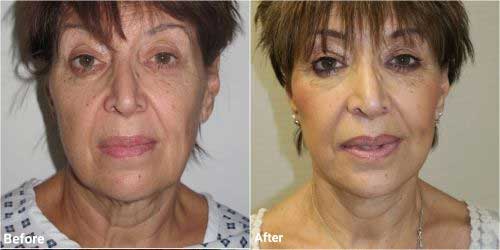

This patient underwent a facelift to improve her jawline and neck. The laxity in her cheek, jawline and neck has been corrected. Also, the loss of volume and flattening of her cheekbone area has been corrected by using a high SMAS technique
-
Facelift in 56 year old


This patient underwent a facelift combined with fat transfer to the cheeks.This is called a volumetric facelift or a 'lift and fill' facelift. This was combined with an upper and lower blepharoplasty . Following this she had a full face fractional carbon dioxide laser treament. In this approach all three ageing factors have been addressed which include correction of sagging soft tissues of the face with the facelift, improving the loss of volume in the face with fat transfer and then finally improving the aged texture and complexion of the skin with laser resurfacing.
-
Recovery at 2 weeks after lower facelift and submental liposuction


This is to show that this patient of mine was back to work 2 weeks after a lower facelift and submental liposuction. She has a very heavy neck which required fat removal and it is usually the liposuction which can cause bruising in the neck. Despite an extensive procedure she looks very respectable and it would be hard for the casual observer to notice that she has had surgery especially from the front view.
-
Facelift in 50 year old


A 50 year old patient on whom I performed a facelift to rejuvenate the jaw line and neck. At the same time you will notice she has some midcheek hollowing and this has been corrected to provide extra volume using a high SMAS technique.
-
Facelift in 65 year old
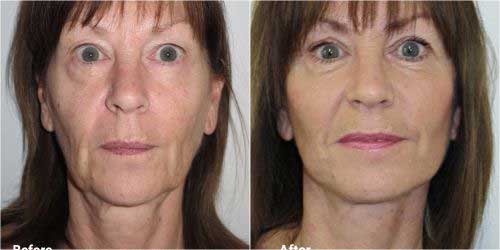

This patient who at the age of 65 years underwent a facelift using a high SMAS technique. This procedure helps to provide volume to the cheek and malar area which was very hollow in this patient. At the same time the jowls and loose skin along the jawline was corrected. The neck was tightened using a lateral approach and in this case I did not need to perform a plastysmaplasty. The combination of these techniques which is individualised to this patient can really help to achieve great results even in a 65 year old patient making her look years younger.
Is a facelift right for me?
What are the different types of facelift?
What type of facelift is right for me?
Are facelifts painful?
Can other procedures be carried out at the same time as a facelift?
Is there a non-surgical alternative to a facelift?
What is the recovery after a facelift?

|
|
What Type of Facelift is Right for Me?
> See article
|

|
|
How long does a facelift last?
> See article
|

|
|
Mini-facelift vs full facelift
> See article
|

|
|
Choosing a facelift surgeon in London
> See article
|

|
|
Facelift Q&A’s with Dr Jag Chana
> See article
|

|
|
The best approach to maintaining the long-term results of facelift surgery
> See article
|

|
|
Where you undergo facelift surgery in London matters
> See article
|

|
|
A new non surgical form of facelift surgery has been unveiled in U.S
> See article
|

|
|
Is social media responsible for the rise in facelift surgery?
> See article
|

|
|
Consultation before anti-ageing facial surgery
> See article
|

|
|
Post-op non-surgical facial rejuvenation
> See article
|

|
|
Male Facelift Surgery
> See article
|

|
|
What to expect after Facelift Surgery?
> See article
|

|
|
The Volumetric Facelift
> See article
|

|
|
From Sydney to London for a Facelift with Dr Chana
> See article
|
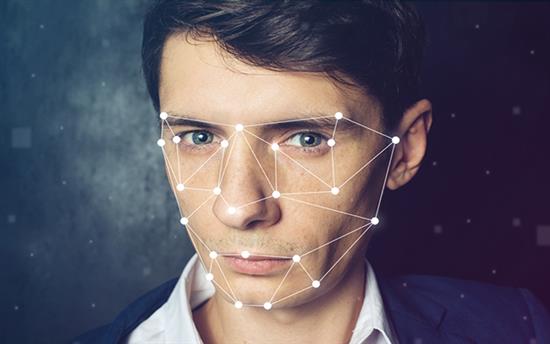
|
|
Facing up to Surgery
> See article
|







.jpg)





a.jpeg)

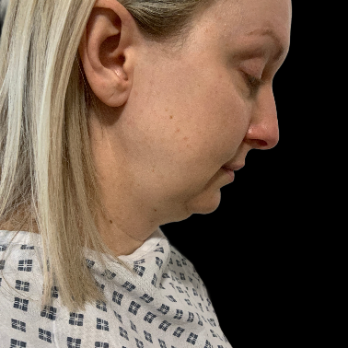

.jpg)
.jpg)

1.jpg)


